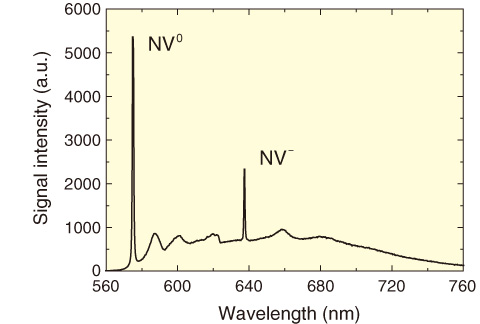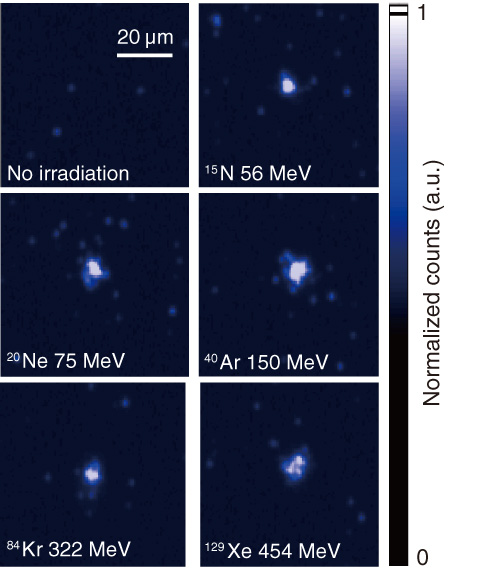
Fig.5-9 Photograph of diamonds irradiated by ultraviolet light

Fig.5-10 Photoluminescence spectrum of created NV center

Fig.5-11 CCD images when an ion strikes a diamond
A single ion causes temporary malfunctions and permanent failures in semiconductors, which are called single event effects (SEEs). To use semiconductors in harsh radiation environments such as space, it is necessary to clarify the mechanism of SEEs. This requires a technique for detecting a single ion in real time. The technique of detecting the position of fluorescence induced by a single ion on a luminescent sheet is currently used. Therefore, we are exploring a luminescent sheet having strong fluorescence intensity capable of detecting a single ion. In this study, we focus on the features of nitrogen-vacancy defects (NV centers), which efficiently absorb ultraviolet light and emit high-intensity fluorescence.
First, diamonds containing dense NV centers were created from synthetic diamonds containing dense nitrogen impurities. By irradiating the sample with a 2 MeV electron beam, vacancies were introduced into the diamond by the displacement damage mechanism. After electron irradiation, thermal treatment at 800 °C was performed for 2 h. By combining nitrogen impurities with vacancies, we successfully created a diamond containing dense NV centers (Fig.5-9). Photoluminescence spectrum analysis clearly revealed that electrically neutral NV0 centers and negatively charged NV- centers were created (Fig.5-10). As shown in the figure, additional defects other than NV centers were not found. Next, the sample was irradiated with several ions at various energies. A measurement system consisting of a highly sensitive CCD camera and an image intensifier was developed. Using the system, fluorescence was successfully detected in real time (Fig.5-11). The spots are detected in the diamonds containing NV centers, but not in those without NV centers. This result is regarded as demonstrating a fundamental technology for elucidating the mechanism of SEEs that reduce the reliability of semiconductors.
This work was partially supported by the Strategic Japanese–German Joint Research Program of the Japan Science and Technology Agency (JST).